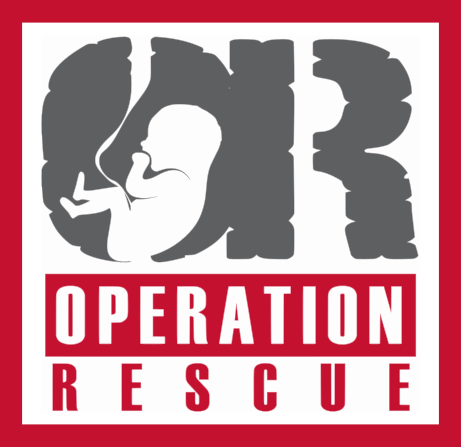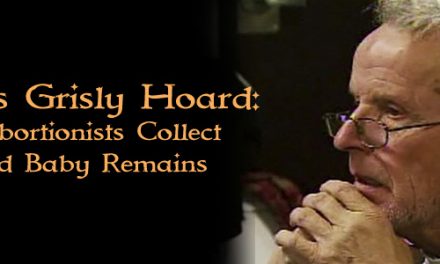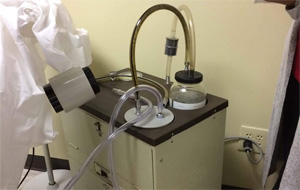We were so moved by this story we wanted to post it on the site as a warning to any woman considering aborting their baby. – Troy Newman.
—-
As Abortion Advocates March, Woman’s Death Reveals Horror of Abortion
by Donetta Robben
LifeNews.com Note: Donetta Robben’s niece was found dead in her apartment April 5, 2001 shortly after having an abortion. At the time, Donetta ran a maternity home for unwed mothers. Now, she has written a book discussing abortion and her niece’s death, entitled Where is My Rainbow. Through Soul Communications, Donetta does freelance writing and leads a post-abortion group along with her husband.
Donetta Robben gazed at her brother sitting across the rectangle table in the investigator’s office. Both were anxious for answers.
The investigator looked sympathetic as she sat down with the family. The words became blurred and blended together: death, journals, drinking, pills, hurt, abortion. Abortion? Abortion.
The word pierced.
Just two days ago Edwin Gillespie had buried his daughter. Now he, along with his two children and his sister were trying to understand why.
Shelly was a 22-year-old college student at the University of Nebraska-Omaha. She was pretty, worked hard — keeping two jobs along with school and liked to have fun — go to bars — party with friends. A typical college student, or so the family thought.
Then, the call came. Shelly was dead. An accidental overdose, or so read the autopsy report.
The answers to Shelly’s death were not in the report, nor were they in the investigator’s office. The answers were written in Shelly’s journals — several notebooks, where she poured out her internal pain, her moral struggles, her broken relationships, her failure as a mother — as a daughter of God.
Shelly did have an abortion five months prior to her death. The family did not know. Shelly thought they might hate her. So, instead, she became locked in her own internal prison where the bars became heavier and heavier until she felt crushed under the weight.
The trauma began before Shelly even left for the clinic. She writes in her journal,
“Dear Lord,
I sit here alone with my thoughts wondering if you will ever find it in your heart to forgive me. Why do I continue to fail you? I’m failing you because I’m turning away from the precious gift of having a child. A child. A breathing, living, beautiful life that I created but too selfish to accept from you. Will you still love me as a child of yours? Will I still love me after today?”
Shelly also felt the pain of a boyfriend who wanted her to get rid of the problem. She writes, “I must let him abandon me. He doesn’t care about me. I know he’s only agreed to pay for it to ease his own guilt.”
The doctor who performed the abortion, LeRoy Carhart, was not a board-certified doctor and cared little for his patient.
Shelly was told to arrive at the clinic at 7 a.m. Her abortion did not take place for more than 10 hours. Carhart walked into the room. His coat was dirty. His glasses were so smeared that Shelly’s friend, Orva, who was with her throughout the procedure, wondered how he could even see out of them.
Shelly tried to make light of the situation since she had some relaxation drugs.
“Don’t hurt me down there?” she said.
“Be still and I won’t,” Carhart answered.
As he proceeded with the vacuum aspiration, Carhart cursed often even using profanities. He said he was tired as he had been in California speaking the day before and had only flown into Omaha early that morning to begin his day’s work.
Shelly suffered from post-abortive hemorrhage. We know through Orva that Shelly was still bleeding four months after the procedure. Post-abortive hemorrhage occurs when the cervix is forced open through an intrusion such as the abortion procedure. This causes stress on the cervical muscles and can even result in ripping the uterine wall.
Since Shelly did not have to return to the abortion clinic for a follow-up check, she had no where to turn. She did not know if the prolonged bleeding was normal or not. If she went to another doctor, she would have to tell him/her she had an abortion, and the pain of telling was more than she could bear. The bleeding became a constant reminder to Shelly of the death of her unborn baby.
Shelly suffered from sleeping disturbances, promiscuous activity and depression. She retreated from her pain by escaping into alcohol. She began drinking heavily even suffering from blackouts, which she documented in her journals.
One night, after a night of drinking, Shelly went into her living room. She had poster-sized wall hangings of the serenity prayer and the poem, “Try again.” She took a photo of her mother with her mother’s father. Both dead. Next to the pictures she placed a bottle of aspirin, an old prescription drug, Benadryl and a bottle of vodka. Shelly took some of each drug and washed it down with the vodka.
She went into her bedroom. Above her bed was a photo of the Lord’s heavenly banquet. On the side of her bed were two angels. Shelly put her rosary around her neck. An empty bottle of holy water was on her dresser. She opened her journal to the day of her abortion. She laid her head on her pillow. She fell asleep. She never woke up.
Dr. David Reardon of the Elliott Institute has done extensive studies regarding suicide and abortion. He states that “abortion is far more likely to drive an unstable woman to suicide than is pregnancy and childbirth.”
Fifty-six percent of women acknowledging symptoms of post-abortive distress reported they had suicidal feelings, Reardon reports. “Twenty-eight percent actually attempted suicide with over half of these women attempting suicide more than once.”
Robben said she tells this story so that Americans will wake up to the problem of abortion.
“The abortion clinic did not free Shelly from her problems,” Robben said. “The clinic and the doctor exploited a vulnerable woman.
“Abortion on demand is spiritually killing women,” Robben said. “And in Shelly’s case it physically killed.”
The names of Shelly’s father and friend have been changed to protect their privacy.

Select Page



